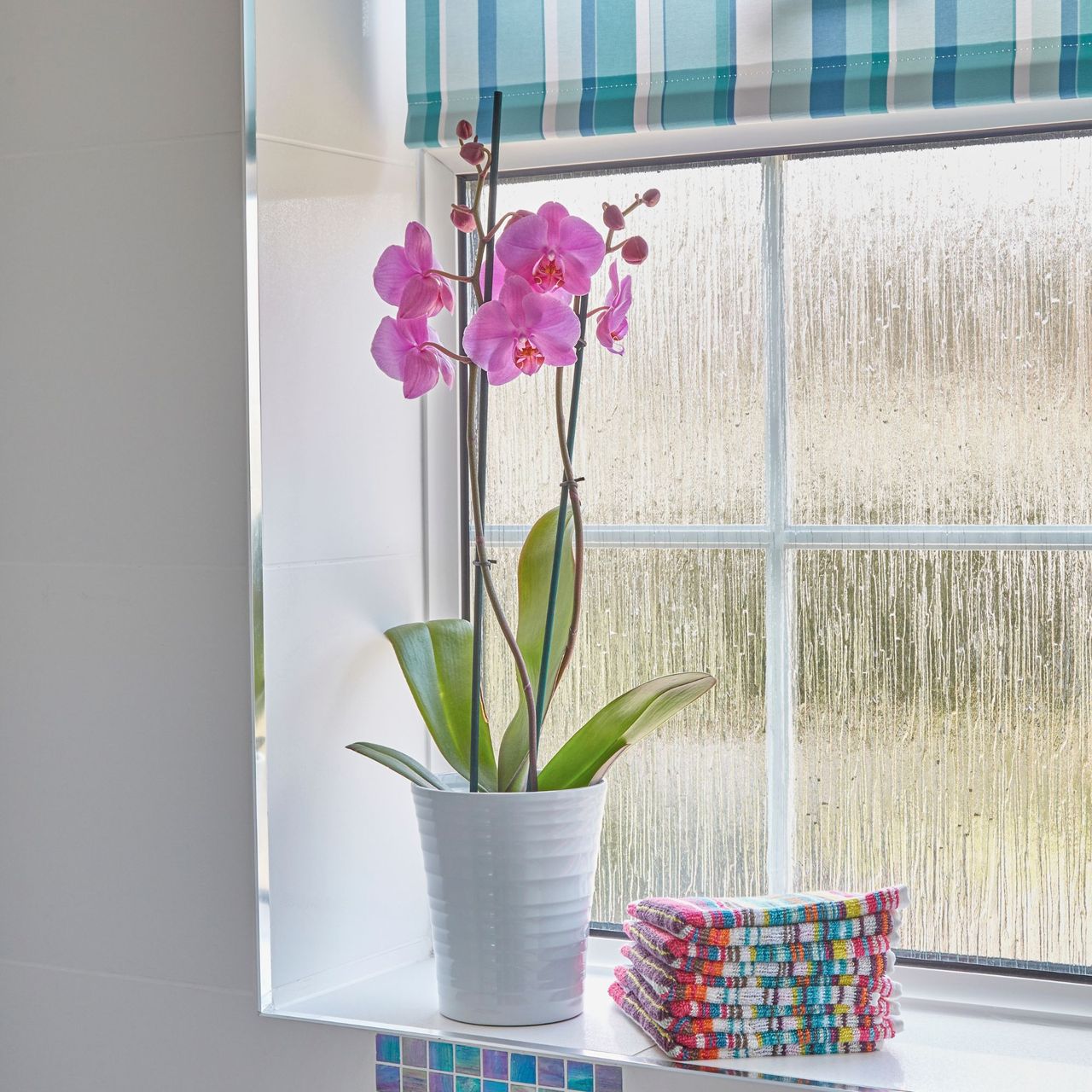
Learning how to care for orchids properly is definitely worth your while – and it could mean the difference between yearly blooms and a plant that stops flowering altogether.
Orchids are one of the best flowering houseplants you can gift, and they're one of my all-time favourite houseplants – but if you want the displays to stay for the long haul, you’ll need to provide them with all the right kinds of TLC. At face value, they seem like a fussier houseplant, but once you’ve got the basics down, they’re pretty tough growers.
To help you out, we’ve thrown together a guide on the best ways to care for orchids. Below, you’ll find tips on positioning, watering, pruning and more for a plant that thrives year after year.
What you'll need
- An orchid, like Phalaenopsis 'Honey Peach' from Crocus
- An indoor watering can, like the GoodHome Red Steel Watering Can from B&Q
- A plant mister, like The White Company Glass Mister
- Some orchid fertiliser, like Westland Orchid Feed Concentrate from Amazon
- Some snips, like the Darlac Ergo Gardening Snips from Amazon
1. Find the right light levels

So, you’ve just taken your new orchid home – but where should you place it?
Well, these plants enjoy plenty of light, but avoid keeping them in a spot that receives direct sunlight.
‘Orchids do best in a spot with bright, indirect sunlight, like near an east- or south-facing window,’ says Jo Lambell, founder of Beards & Daisies. ‘Direct sun can scorch their leaves, so filtered light is ideal.’
If you want your orchid to live for a long time, achieving that perfect balance of bright but indirect light is key.
‘Sheer curtains can help keep the harsh sunlight away,’ suggests Monique Kemperman, on behalf of the Plants & Flowers Foundation Holland.
2. Keep the temperature consistent

Sure, light levels are important when it comes to learning how to care for orchids successfully, but temperature levels are just as crucial to their health.
‘Temperature is another key player,’ says Monique. ‘Most orchids are comfortable between 18 and 25°C, but a few have their own preferences.
‘Vandas prefer things a little toastier (20–30°C), while Cymbidiums and Slipper Orchids prefer cooler temperatures (15–20°C). It’s less about being fussy, more about knowing what makes them feel at home.’
Avoid placing your orchid near radiators or in cold draughts, too. Temperature changes are one of the leading causes of orchid leaves turning yellow, after all!
3. Up the humidity

Before we talk about watering, it’s worth paying attention to the moisture levels in the air around your orchid plant.
‘Humidity is key, around 40–60%,’ says Jo from Beards & Daisies. ‘A small humidifier or a shallow tray with water and pebbles can help.’
Try this affordable Levoit humidifier from Amazon.
4. Don't overwater
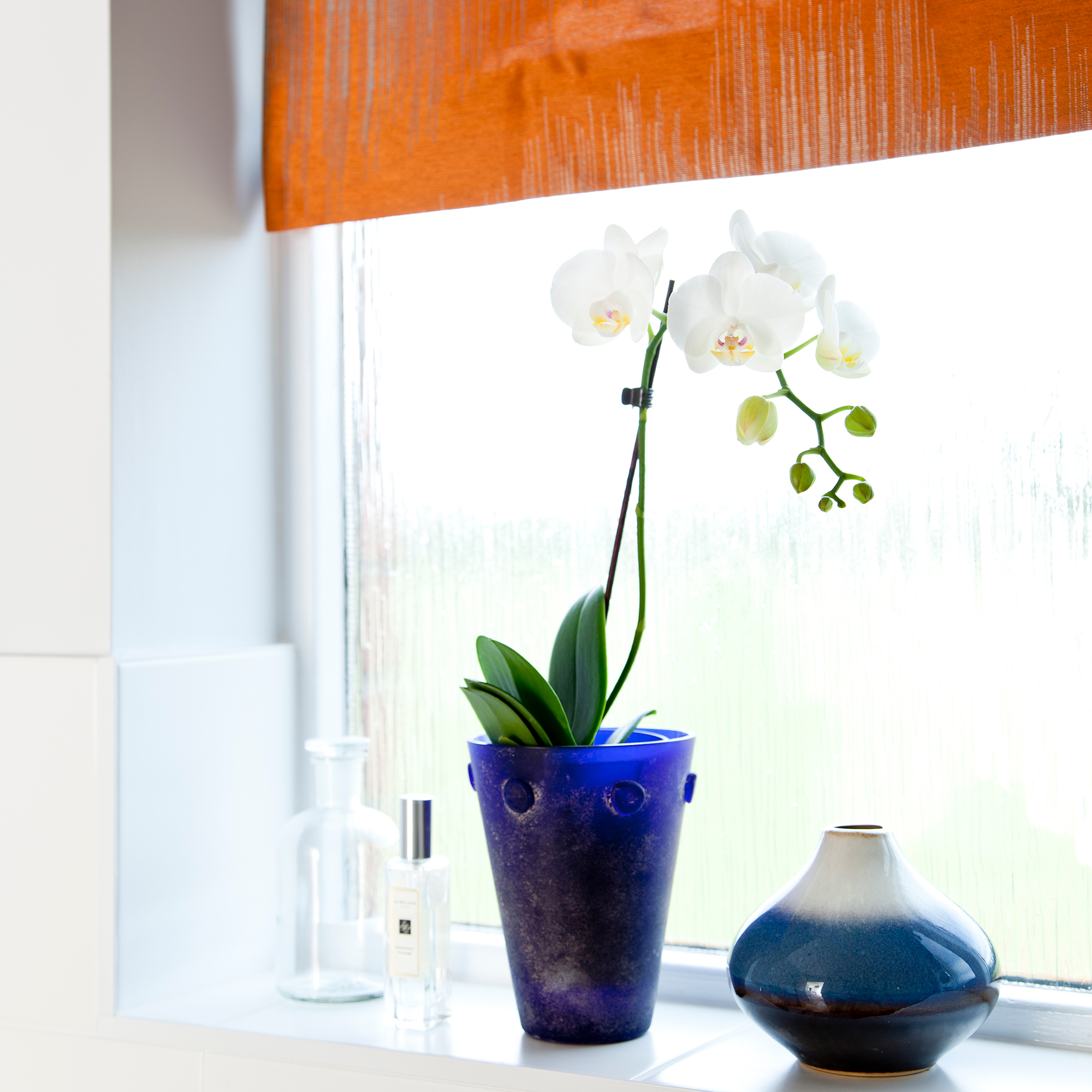
Working out how to water orchids is one of the things orchid owners struggle with most, and frustratingly, getting it wrong can spell disaster for your plant’s health.
According to Monique, it’s not a one-size-fits-all approach – with so many species of orchid out there, each has varying needs.
‘Miltonia Orchids thrive in consistently moist soil, while Moth Orchids prefer their potting mix to dry out almost completely between waterings, so it is important to water according to the particular species,’ says Monique.
On the whole, though, watering about once a week is the general recommendation. Just make sure you aren’t overdoing it.
‘Orchids hate sitting in water, so good drainage is really important,’ says Jo from Beards & Daisies. ‘A good rule of thumb: if you’re unsure, it’s better to underwater than overwater.’
5. Know when to repot
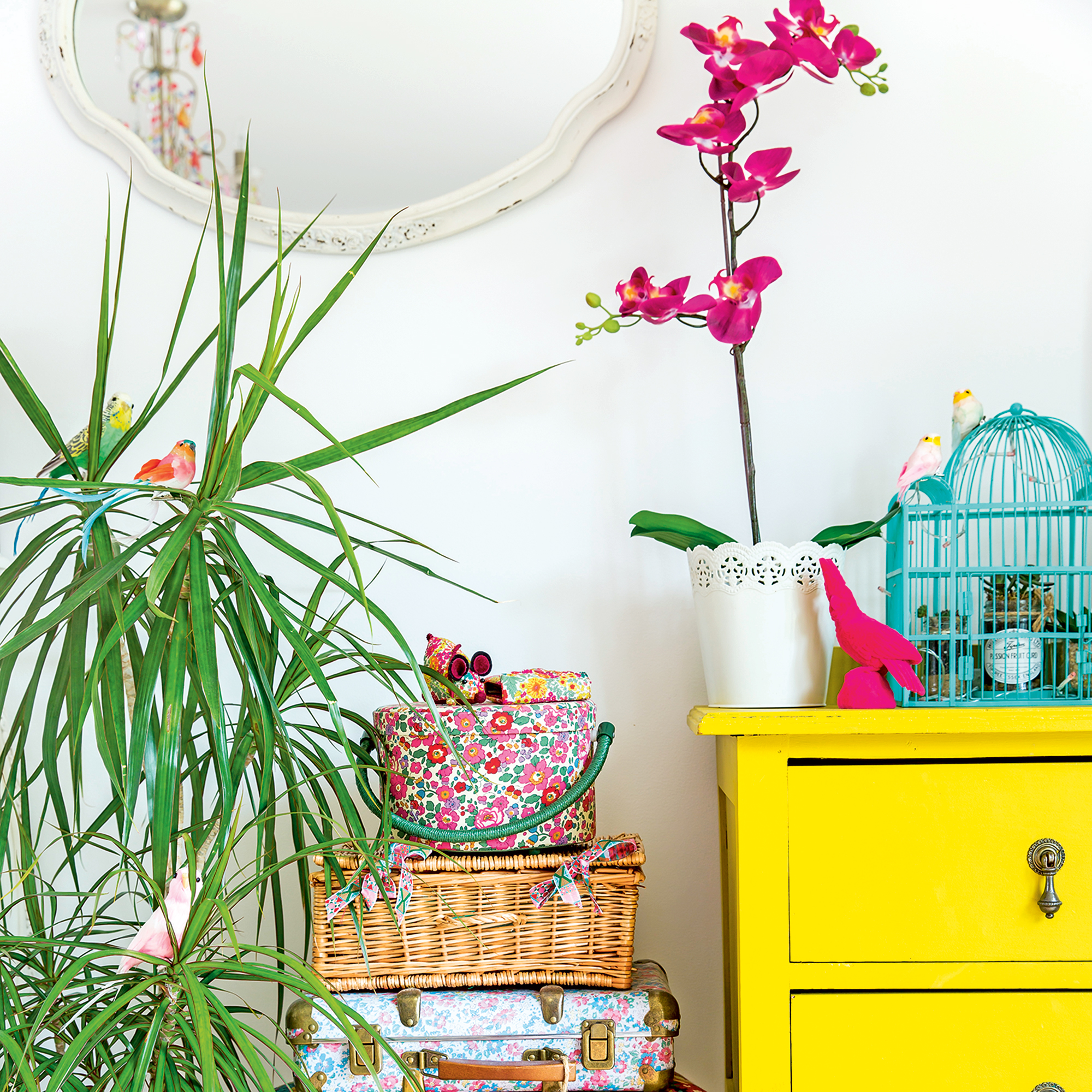
Orchids outgrow their containers eventually, so it’s worth learning how to repot an orchid.
'Repot every year or two with fresh orchid bark when the old mix breaks down or the roots get crowded,' advises Jo.
If you suspect your orchid has a touch of root rot, it's better to repot your plant as soon as you can.
'If there are signs of decay, re-potting should be done as soon as possible,' says Amy Malin, secretary of the Orchid Society of Great Britain.
Using a transparent pot, such as this clear orchid pot from Amazon, will allow the roots to receive extra light and enable you to monitor their health more easily.
6. Feed your orchid
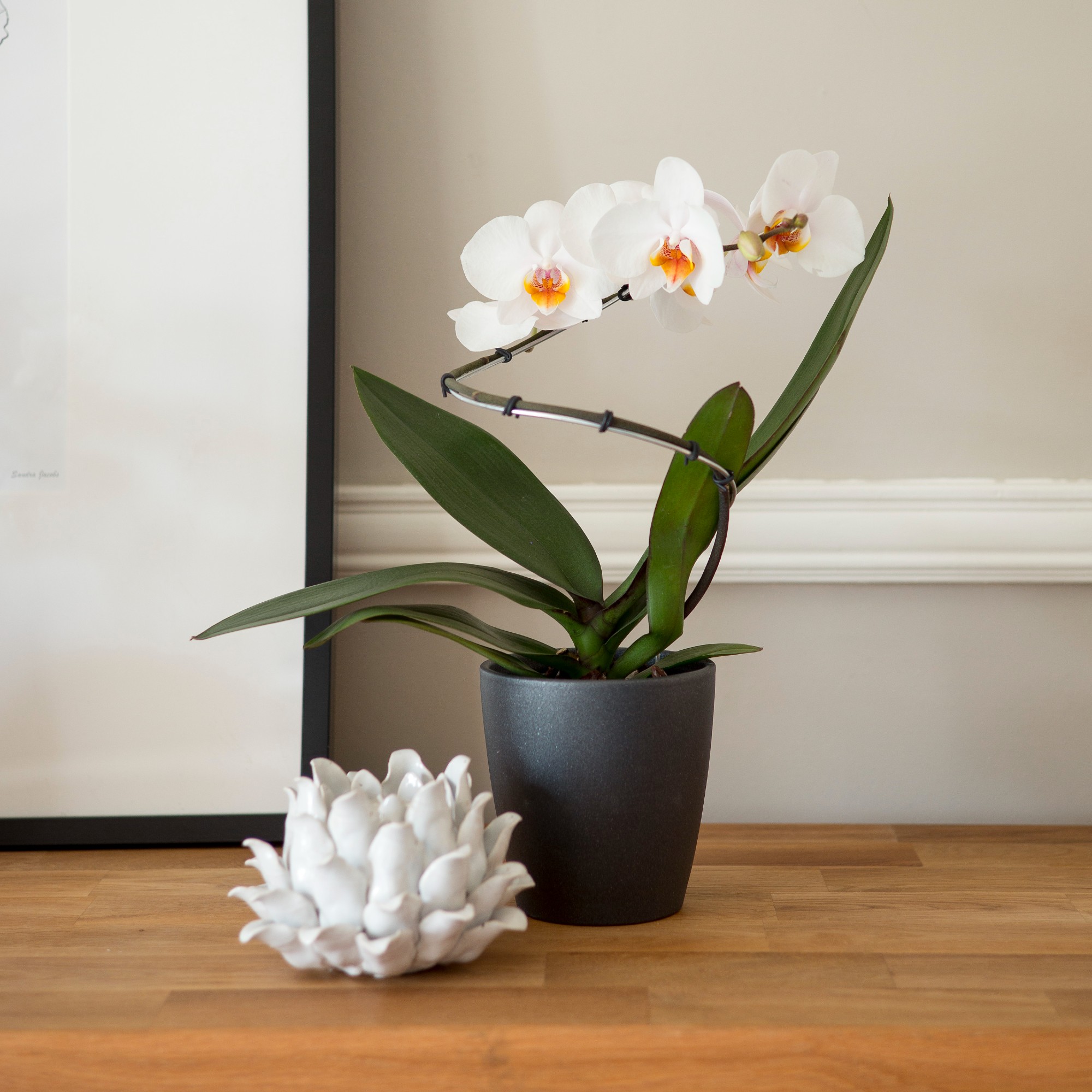
Feeding your orchid regularly will prolong its flowering period, encourage the production of blooms, and boost the overall health of the plant, especially during spring and summer.
'Fertilise every few weeks with a gentle orchid food, diluted to half strength,' says Jo.
Baby Bio Orchid Food is a bestseller on Amazon.
7. Pruning is key
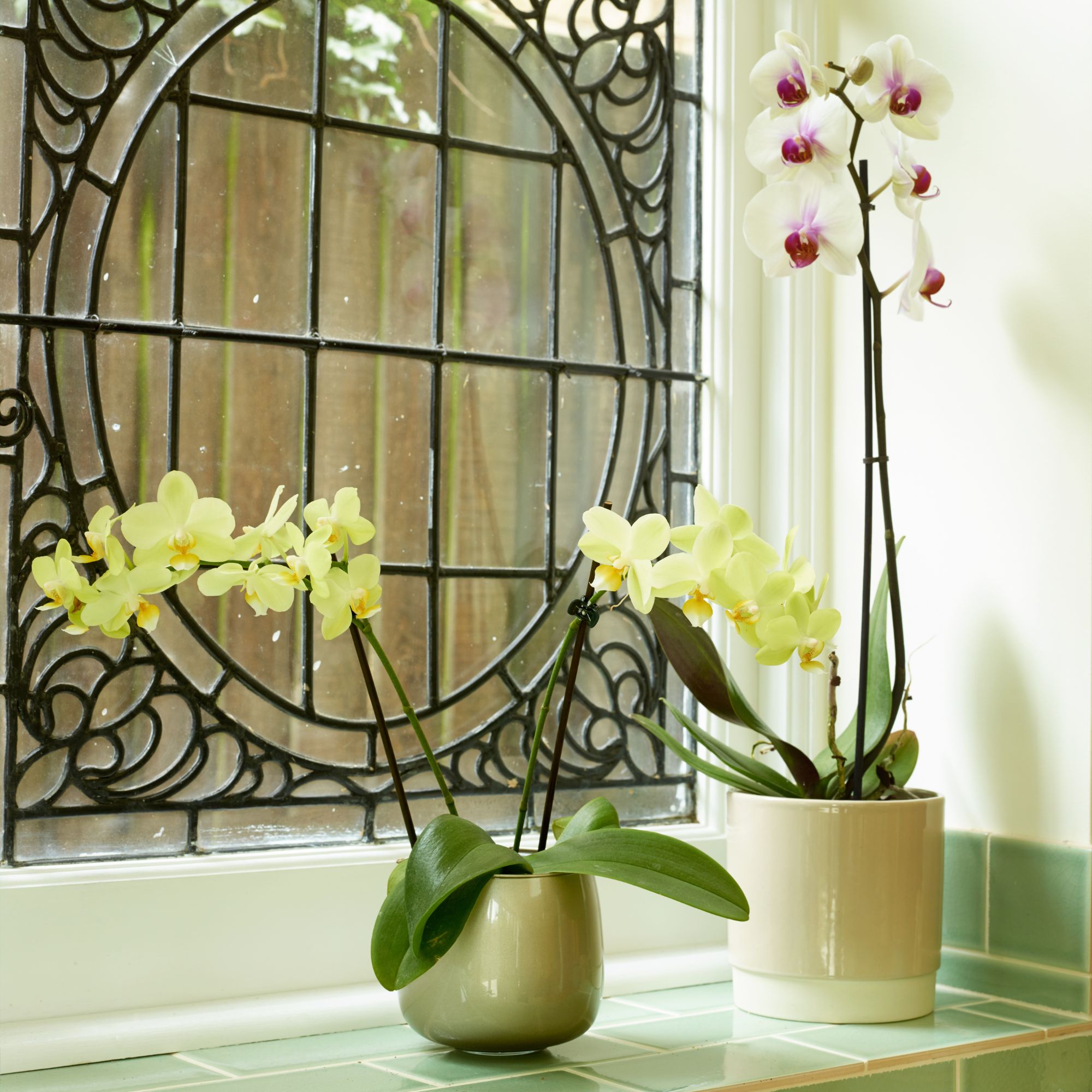
Figuring out how to prune an orchid is one of the most important steps in learning how to care for orchids, especially if you want your plant to flower again.
'Once the flowers fall off, you can trim the spike just above a little bump (called a node) to encourage new blooms,' explains Jo. 'If the spike turns brown and dried out, go ahead and cut it back to the base.
'You can also remove any dead roots or yellowing leaves when you see them.'
The Darlac Ergo Gardening Snips from Amazon are a great choice.
Keep these orchid care tips handy and your plant should thrive for years to come!







